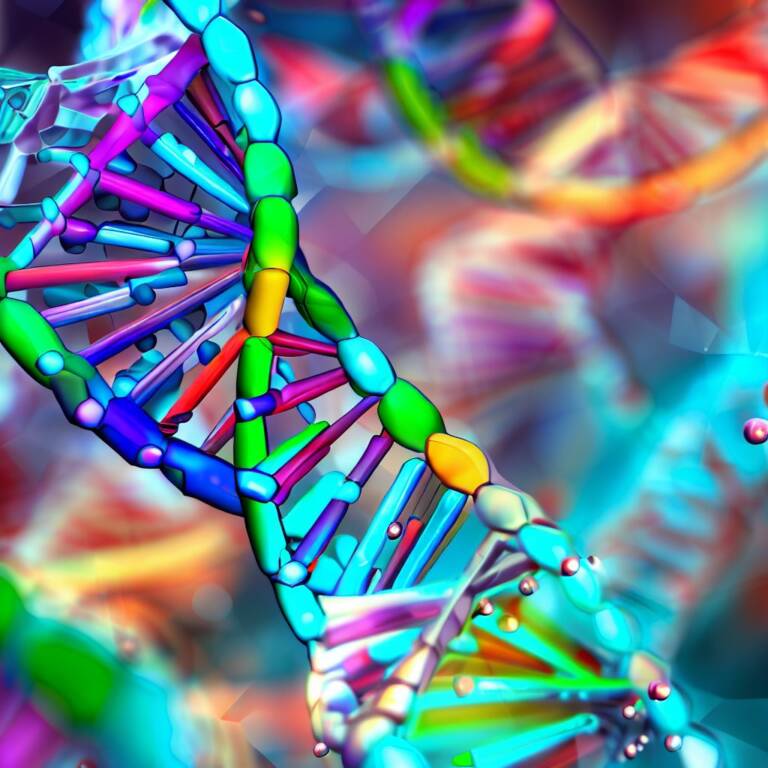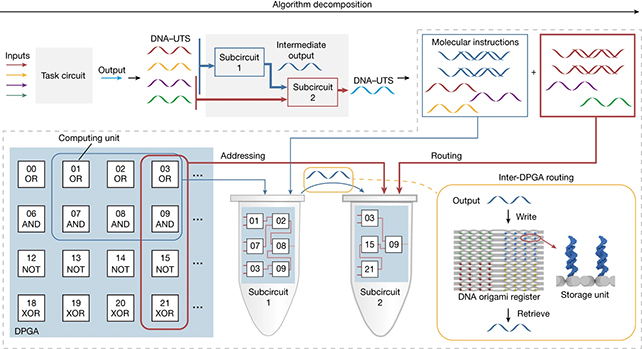DNA computers: Now researchers have created a liquid computer

In recent years, engineers have been exploring a subtly new role for the DNA molecule's unique capabilities as the basis for a biological computer. Unfortunately, despite 30 years having passed since the first prototype, most DNA computers have struggled to develop more than a few bespoke algorithms.
A team of Chinese researchers has nowcome up with a DNA integrated circuit (DIC) that has a much more general purpose. The gates of the liquid computer can form as many as 100 billion circuits, demonstrating its versatility: each of them is capable of executing its own program.
DNA computing has the potential to create machines that offer significant leaps in speed and capacity, and as with quantum computing, there are several approaches that can be taken. In this case, scientists wanted to build something more adaptable than previous efforts, with a wider range of potential uses.
“Programmability and scalability are two critical factors in achieving general-purpose computing,” the researchers write in the published paper.
“Programmability allows you to specify the device to execute various algorithms, while scalability allows it to handle an increasing amount of work as resources are added to the system.”
To achieve this, the team focused on what it called DNA-based programmable gate arrays, or DPGAs: short segments of DNA strung together to create larger structures, which could then be built into integrated circuits of various combinations.
The DPGAs were made by mixing DNA strands with buffer liquid in test tubes, relying on chemical reactions to create the connections and combinations needed to build the CIDs the researchers were aiming for.
Detailed modeling was also required to understand how to handle input and output signals and perform logic functions, just like a standard computer. The larger circuits, too large for a single DPGA, were broken down into components to build.
Diagram of the structure of DNA
Computational functions were matched to DNA molecules in a test tube. (Lv et al., Nature, 2023)
In the course of experiments, scientists managed to create circuits for solving quadratic equations and square roots, for example. According to the researchers, these systems could be adapted for purposes such as disease diagnosis.
Additionally, experimental systems showed poor signal attenuation, which is the gradual loss of strength of a signal as it travels. This is another fundamental aspect of being able to build DNA computers that can scale and adapt.
We are still far from realizing the full potential of DNA computing, but in recent years scientists have made significant progress in modifying this biological form of memory for use in conventional computing tasks.
“The ability to integrate large-scale DPGA networks without apparent signal attenuation marks a critical step toward general-purpose DNA computing,” the researchers write.

Thanks to our Telegram channel you can stay updated on the publication of new Economic Scenarios articles.
The article DNA computers: researchers have now created a liquid computer comes from Scenari Economici .
This is a machine translation of a post published on Scenari Economici at the URL https://scenarieconomici.it/computer-a-dna-ora-i-ricercatori-hanno-realizzato-un-computer-liquido/ on Sat, 16 Sep 2023 06:00:19 +0000.

